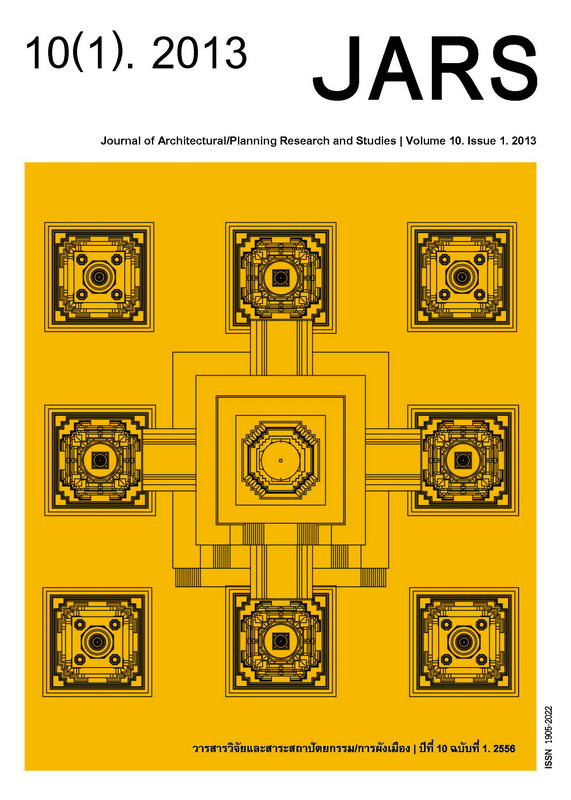Le Corbusier’s Solar Shading Strategy for Tropical Environment: A Sustainable Approach
Main Article Content
Abstract
In warm and tropical climates, excess solar gain may result in high cooling energy consumption. Shadingis a simple method to block the sun before it can get into the building. The ‘brise-soleil’, or ‘sun-breaker’solution refers to a permanent sun shading technique, like the simple patterned concrete walls popularized byLe Corbusier. Le Corbusier in his design of buildings in tropical climate wanted to make a ‘pact with nature’unlike his earlier works of the cold climates where he was to ‘combat the nature’. Le Corbusier’s solar shadingstrategy in Unit De Habitation and Capitol complex in Chandigarh are pioneering example for his approachtowards dealing with the harsh tropical climate. This paper tries to rediscover the climate consciousness ofthe master architect in terms of Brise Soleil as his solar shading strategy for the tropical environment. Themethodology adopted in the research is through qualitative analysis. In this paper an attempt has been madeto analyse Brise soleil as a solar shading strategy with reference to the tropical architecture of Le Corbusier.The application of Brise Soleil in Le Corbusier’s tropical works such as Ministry of education in Rio de Janeiro,Unité d’ Habitation in Marseilles and Capitol Complex in Chandigarh has been studied. The relevance ofshading in today’s context with reference to climatic control and energy conservation and sustainability hasalso been discussed. Incorporation of Brise Soleil as a solar shading technique in buildings will certainlyreduce our dependency on artificial means for thermal comfort and minimize the environmental problems dueto excessive consumption of energy and will evolve a built form, which will be more climate responsive andmore sustainable.
Downloads
Article Details

This work is licensed under a Creative Commons Attribution-NonCommercial-NoDerivatives 4.0 International License.
All material is licensed under the terms of the Creative Commons Attribution 4.0 International (CC-BY-NC-ND 4.0) License, unless otherwise stated. As such, authors are free to share, copy, and redistribute the material in any medium or format. The authors must give appropriate credit, provide a link to the license, and indicate if changes were made. The authors may do so in any reasonable manner, but not in any way that suggests the licensor endorses you or your use. The authors may not use the material for commercial purposes. If the authors remix, transform, or build upon the material, they may not distribute the modified material, unless permission is obtained from JARS. Final, accepted versions of the paper may be posted on third party repositories, provided appropriate acknowledgement to the original source is clearly noted.
References
Bansal, N. K., Sodha, M. S. & Kumar. A. (1988). Solar passive building: Science and design. Oxford, New York: Pergamon Press.
Boesiger, W., Stonorov, O. & Bill, M. (1970). Le Corbusier: Complete works. London: Thames & Hudson.
Sobin, H. J. (2011). Le Corbusier in North Africa: the birth of the “brise-soleil”. Retrieved August 25, 2011, from http://www.cabdirect.org/abstracts/19812607709.html
Corbusier, L. (1957). Le Corbusier et son atelier rue de sevres 35, Oeuvre complete 1952-1957. Zurish, Switzerland: Editions Girsberger Zurish.
Corbusier, L. (1981). Le Corbusier sketchbooks, Volume 2 1950-1954. Cambridge, U.S.A.: MIT Press.
Giedion, S. (1941). Space, time and architecture: The growth of a new tradition. U.S.A.: Harvard University Press.
Givoni, B. (1976). Man, climate and architecture. Amsterdam: Elsevier Science.
Hansen, J., Sato, M. & Ruedy, R. (2012). Perception of climate change. Proceedings of the National Academy of Sciences of the United States of America, 110(7), 1-9.
High Court of Punjab and Haryana. (2011). High court’s architectural design. Retrieved August 20, 2011, from http://highcourtchd.gov.in/right_menu/articles/highcourtartucturaldesigne.pdf
Mindlin, H. E. & Giedion, S. (1999). Arquitetura moderna no Brasil. Rio de Janeiro, Brazil: Aeroplano.
Sobin, H. (2007). From L’Air exact to L’Aérateur ventilation and its evolution in the architectural work of Le Corbusier. In Tanzer, K. & Longoria, R. (Eds.). The green braid: towards an architecture of ecology, economy and equity (p. 145). Routledge, New York.
Weston, R. (2004). Key buildings of the 20th century: Plans, sections and elevations. New York: W. W. Norton & Company.


